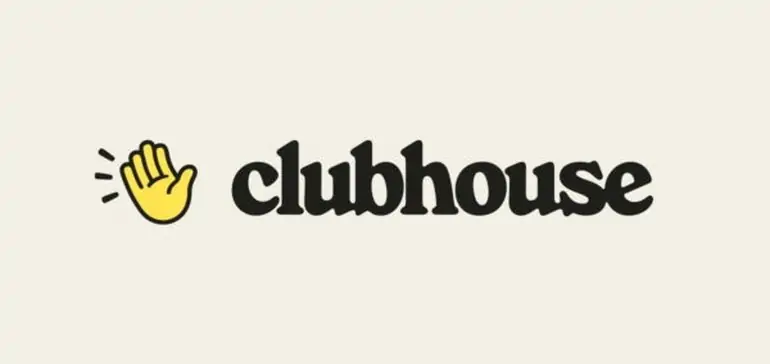Mobile App Development, SEO, Social Media, Uncategorized, Web Development, Website Design
Clubhouse Adds Spatial Audio, Now Averaging 700k Rooms Per Day
- By Brett Belau
30 Aug

It may have lost some of its buzz, and it may seem like Twitter’s Spaces has now superseded its offering in many ways. But Clubhouse is still rising, not as fast as it had been back in January, but it is moving forward nonetheless.
And this could help it maintain that momentum. Today, as part its weekly community update, Clubhouse announced that it’s now rolling out spatial audio, adding a new level of depth to your Clubhouse chats.
Hear ye, hear ye ???? spAAaAaAatial audio on Clubhouse!
It’s like surround sound, but w/ your own headphones. A more vibrant, human experience! Plus makes it much easier to tell who’s talking.
thanks to @juberti for this one ???? rolling out now on iOS, Android coming soon! pic.twitter.com/Zit6F9ijRK
— Clubhouse (@Clubhouse) August 29, 2021
As you can hear in this example clip (better in headphones), spatial audio makes it sound more like a real world chat, with each different speaker in a seemingly different position around the virtual room.
As explained by Clubhouse:
“Spatial audio replicates how we hear and process voices in the same physical room, spacing individual speakers in the listener’s wired, or Bluetooth headphones (including Airpods) or car stereo system.”
That can make it a more engaging experience, replicating IRL discussion, while also better enabling differentiation between each voice, as you’ll know, for example, that ‘John’s voice will be coming from your left, while ‘Jane’s will come from your right during the chat.
To simulate audio spacing, Clubhouse’s software will now assign a specific position to each speaker in a room “taking care to evenly distribute speakers for maximum intelligibility”. Clubhouse also notes that music and stereo sources will also be positioned, and will maintain their assigned stereo separation in the artificial space.
The only catch is that the speakers themselves won’t get the same experience – spatial audio will only be active for members of the audience. That could present some challenges in management, but it could also help those on stage to better follow along with the conversation, without having to be concerned about potential shifts in audio levels for each co-speaker.
And for the audience, it could present all new creative opportunities:
“Imagine a ghost story where you can hear the evil spirit move around the haunted house or even whisper in your ear. Or a musical performance or comedy show where you can hear applause or laughter coming from every corner of a sold out virtual club.”
It’s a good update, which should help Clubhouse maintain audience interest – which, as noted, is still seemingly rising as the app continues to push on in the face of increasing competition.
Indeed, Clubhouse says that it’s now hosting some 700,000 rooms in the app every day, an increase of 130% on its volumes just three months ago.
Of course, more ‘Rooms’ doesn’t necessarily reflect more active app users overall, and Clubhouse hasn’t provided an update on its total user figures of late (the app reported 10m weekly users back in May). But even so, its download rates, while far lower than its peak, have leveled somewhat since June, with both iOS and Android users still looking to tap into its various Clubs and discussions.
The app’s Android app launch back in May has further propelled its overall numbers, with Clubhouse seeing particularly significant growth in India, where Android is clearly the dominant OS, and where users have welcomed the open opportunity of live discussion, partnered with the more data-friendly audio-only approach.
The region has become a much bigger focus for the app of late, and it’ll be hoping that the addition of spatial audio will help to reignite interest in all markets, and maintain its position as the best audio social app.
But with Twitter set to take the next big step with its Spaces option anytime soon, and Facebook gradually ramping up the roll-out of its audio rooms, the challenge for Clubhouse remains significant.
Still, innovation is key, and spatial audio could be a big, bold step in this respect.
Source: www.socialmediatoday.com, originally published on 2021-08-29 18:45:17
Connect with B2 Web Studios
Get B2 news, tips and the latest trends on web, mobile and digital marketing
- Appleton/Green Bay (HQ): (920) 358-0305
- Las Vegas, NV (Satellite): (702) 659-7809
- Email Us: [email protected]

© Copyright 2002 – 2022 B2 Web Studios, a division of B2 Computing LLC. All rights reserved. All logos trademarks of their respective owners. Privacy Policy

![How to Successfully Use Social Media: A Small Business Guide for Beginners [Infographic]](https://b2webstudios.com/storage/2023/02/How-to-Successfully-Use-Social-Media-A-Small-Business-Guide-85x70.jpg)



![How to Successfully Use Social Media: A Small Business Guide for Beginners [Infographic]](https://b2webstudios.com/storage/2023/02/How-to-Successfully-Use-Social-Media-A-Small-Business-Guide-300x169.jpg)


Recent Comments